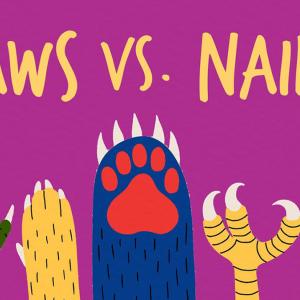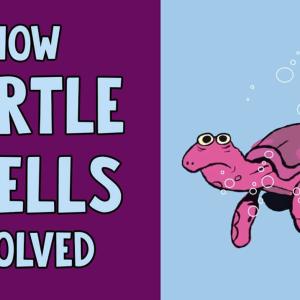
计算生物学家、TED高级研究员劳拉·博伊金(Laura Boykin)说,全世界有近8亿人依靠木薯生存,但是这个重要的食物来源正受到完全可以预防的病毒攻击。她为我们展示了在东非的农田,她如何与一个多元化的科学家团队合作,帮助农民保持作物健康。通过使用便携式DNA实验室和微型超级计算机,他们不再需要几个月,而是在几小时内就能识别病毒。
I get out of bed for two reasons. One, small-scale family farmers need more food. It's crazy that in 2019 farmers that feed us are hungry. And two, science needs to be more diverse and inclusive. If we're going to solve the toughest challenges on the planet, like food insecurity for the millions living in extreme poverty, it's going to take all of us. 文章源自:力哥爱英语(ienglish521.com)力哥爱英语-https://ienglish521.com/3000.html
我早上起床为了两个原因。第一,小规模农民家庭需要更多的粮食。2019年,为我们供应粮食的农民们还要忍饥受饿,简直不可思议。第二,科学需要更多元化,更包容。如果我们要解决地球上最艰难的挑战,如拯救成千上万地瘠民贫的粮食短缺,就需要我们所有人的共同努力。文章源自:力哥爱英语(ienglish521.com)力哥爱英语-https://ienglish521.com/3000.html
I want to use the latest technology with the most diverse and inclusive teams on the planet to help farmers have more food. I'm a computational biologist. I know -- what is that and how is it going to help end hunger? Basically, I like computers and biology and somehow, putting that together is a job. 文章源自:力哥爱英语(ienglish521.com)力哥爱英语-https://ienglish521.com/3000.html
我要用最先进的科技,和地球上最多元化和包容的团队一起,帮助农民们生产更多的粮食。我是一位计算生物学家。你们可能会好奇,那是什么?它将如何杜绝饥饿?这么说吧,我喜欢计算机和生物学,于是它们以某种方式结合在一起就成了一项工作。文章源自:力哥爱英语(ienglish521.com)力哥爱英语-https://ienglish521.com/3000.html
I don't have a story of wanting to be a biologist from a young age. The truth is, I played basketball in college. And part of my financial aid package was I needed a work-study job. So one random day, I wandered to the nearest building to my dorm room. And it just so happens it was the biology building. I went inside and looked at the job board. Yes, this is pre-the-internet. And I saw a three-by-five card advertising a job to work in the herbarium. I quickly took down the number, because it said "flexible hours," and I needed that to work around my basketball schedule. I ran to the library to figure out what an herbarium was. 文章源自:力哥爱英语(ienglish521.com)力哥爱英语-https://ienglish521.com/3000.html
我没有从小要成为一个生物学家的故事。事实是,我在大学时是打篮球的。我一部分的经济来源依赖半工半读。突然有一天,我漫步到了宿舍旁边的建筑物,那刚好是生物学系。我进去看到了招聘告示板。是的,那是在还没有互联网的时代。我看到了一张明信片大小的卡片,招募人员到植物标本室工作。我赶紧记下联络号码,因为它说"工作时间灵活",我需要那个来配合我的篮球时间表。然后我跑去图书馆查什么是植物标本室。文章源自:力哥爱英语(ienglish521.com)力哥爱英语-https://ienglish521.com/3000.html
And it turns out an herbarium is where they store dead, dried plants. I was lucky to land the job. So my first scientific job was gluing dead plants onto paper for hours on end. 文章源自:力哥爱英语(ienglish521.com)力哥爱英语-https://ienglish521.com/3000.html
原来植物标本室是来收藏死了,干了的植物。我幸运地被录取了。所以我的第一份科学工作就是花上几个小时将枯死的植物粘在纸上。文章源自:力哥爱英语(ienglish521.com)力哥爱英语-https://ienglish521.com/3000.html
It's so glamorous. This is how I became a computational biologist. During that time, genomics and computing were coming of age. And I went on to do my masters combining biology and computers. 文章源自:力哥爱英语(ienglish521.com)力哥爱英语-https://ienglish521.com/3000.html
它是如此的风光啊。这就是我如何成为了计算生物学家。在那个时候,基因组学和计算学如日方升。毕业后我开始攻读结合生物学和计算机的硕士。文章源自:力哥爱英语(ienglish521.com)力哥爱英语-https://ienglish521.com/3000.html
During that time, I worked at Los Alamos National Lab in the theoretical biology and biophysics group. And it was there I had my first encounter with the supercomputer, and my mind was blown. With the power of supercomputing, which is basically thousands of connected PCs on steroids, we were able to uncover the complexities of influenza and hepatitis C. And it was during this time that I saw the power of using computers and biology combined, for humanity. And I wanted this to be my career path. So, since 1999, I've spent the majority of my scientific career in very high-tech labs, surrounded by really expensive equipment. 文章源自:力哥爱英语(ienglish521.com)力哥爱英语-https://ienglish521.com/3000.html
当时,我在拉斯阿拉莫斯国家实验室理论生物学和生物物理学组工作。就在那里,我初次见证了超级计算机,真是惊为天人。借助超级计算机,也就是数千台联网电脑的力量,我们能够发现流感病毒和丙性肝炎的复杂性。正是这时候我看到了利用计算机和生物学相结合来造福人类的力量。我想把这当作终生事业。所以,从1999年开始,我大部分的科学生涯都在非常高科技的实验室里度过,周围都是非常昂贵的设备。文章源自:力哥爱英语(ienglish521.com)力哥爱英语-https://ienglish521.com/3000.html
So many ask me how and why do I work for farmers in Africa. Well, because of my computing skills, in 2013, a team of East African scientists asked me to join the team in the plight to save cassava. Cassava is a plant whose leaves and roots feed 800 million people globally. And 500 million in East Africa. So that's nearly a billion people relying on this plant for their daily calories. If a small-scale family farmer has enough cassava, she can feed her family and she can sell it at the market for important things like school fees, medical expenses and savings. 文章源自:力哥爱英语(ienglish521.com)力哥爱英语-https://ienglish521.com/3000.html
很多人问我,我为什么,又是如何为非洲的农民工作的。由于我的计算技能,在2013年,一个东非科学家小组邀请我加入拯救木薯的队伍。木薯的叶子和根部能养活全球8亿人,有5亿人在东非。差不多有十亿人依靠这种植物来供应他们每天的卡路里。如果一个小型家庭农场主有足够的木薯,她就可以养活她的家人,并在市场上售卖这些木薯,换取重要的东西,如学费,医疗费用和储蓄。文章源自:力哥爱英语(ienglish521.com)力哥爱英语-https://ienglish521.com/3000.html
But cassava is under attack in Africa. Whiteflies and viruses are devastating cassava. Whiteflies are tiny insects that feed on the leaves of over 600 plants. They are bad news. There are many species; they become pesticide resistant; and they transmit hundreds of plant viruses that cause cassava brown streak disease and cassava mosaic disease. This completely kills the plant. And if there's no cassava, there's no food or income for millions of people. 文章源自:力哥爱英语(ienglish521.com)力哥爱英语-https://ienglish521.com/3000.html
但是,木薯的种植在非洲受到了冲击。粉虱和病毒在摧毁着木薯。粉虱是体型微小的昆虫,以超过600种植物的树叶为食。它们不请自来,有很多种类,具有抗药性,还能传播数百种植物病毒,导致木薯患上棕色条纹病和木薯马赛克病。这会彻底杀死作物。如果没有木薯,那数百万人就没有食物或收入。文章源自:力哥爱英语(ienglish521.com)力哥爱英语-https://ienglish521.com/3000.html
It took me one trip to Tanzania to realize that these women need some help. These amazing, strong, small-scale family farmers, the majority women, are doing it rough. They don't have enough food to feed their families, and it's a real crisis. What happens is they go out and plant fields of cassava when the rains come. Nine months later, there's nothing, because of these pests and pathogens. And I thought to myself, how in the world can farmers be hungry? 文章源自:力哥爱英语(ienglish521.com)力哥爱英语-https://ienglish521.com/3000.html
我去了一趟坦桑尼亚,意识到那里的妇女需要一些帮助。这些了不起的,坚强的,小型家庭农场主,大多数是妇女,他们的生活苦不堪言。他们没有足够的食物来养活家人,这是一场真正的危机。现实情况是,当雨季来临的时候,她们到木薯田里耕种。九个月之后,什么都没有,都是因为这些害虫和病原体。我不禁心想,这世界上怎么还有食不果腹的农民呢?文章源自:力哥爱英语(ienglish521.com)力哥爱英语-https://ienglish521.com/3000.html
So I decided to spend some time on the ground with the farmers and the scientists to see if I had any skills that could be helpful. The situation on the ground is shocking. The whiteflies have destroyed the leaves that are eaten for protein, and the viruses have destroyed the roots that are eaten for starch. An entire growing season will pass, and the farmer will lose an entire year of income and food, and the family will suffer a long hunger season. This is completely preventable. If the farmer knew what variety of cassava to plant in her field, that was resistant to those viruses and pathogens, they would have more food. 文章源自:力哥爱英语(ienglish521.com)力哥爱英语-https://ienglish521.com/3000.html
所以我决定花一段时间在田里,跟着农民和科学家们,看看我是否有帮得上忙的技能。当地局势令人震惊。粉虱毁坏树叶为摄取蛋白质,病毒摧毁根部为摄取淀粉。在整个生长季节过去后,农民将失去整整一年的收入和食物,他们的家庭将遭受一个漫长的饥饿季节。这完全是可以预防的。如果农民知道在她的田里种植什么品种的木薯可以抵抗这些病毒和病原体,她们就会有更多的食物。文章源自:力哥爱英语(ienglish521.com)力哥爱英语-https://ienglish521.com/3000.html
We have all the technology we need, but the knowledge and the resources are not equally distributed around the globe. So what I mean specifically is, the older genomic technologies that have been required to uncover the complexities in these pests and pathogens -- these technologies were not made for sub-Saharan Africa. They cost upwards of a million dollars; they require constant power and specialized human capacity. These machines are few and far between on the continent, which is leaving many scientists battling on the front lines no choice but to send the samples overseas. And when you send the samples overseas, samples degrade, it costs a lot of money, and trying to get the data back over weak internet is nearly impossible. So sometimes it can take six months to get the results back to the farmer. And by then, it's too late. The crop is already gone, which results in further poverty and more hunger.
我们拥有我们需要的所有科技,但这些知识和资源在全球的分布非常不均衡。我想强调的是,传统的基因组技术被用于揭露这些害虫和病原体的复杂性——这些技术不是为南非撒哈拉地带而设的。它们的花费在一百万美元以上,需要不断的电力供应和专门的技术人员操作。这些机器在非洲大陆上寥寥无几,让许多在前线战斗的科学家不得不把样品送到海外。当你把样品送到海外时,样品会降解,花费很昂贵,而且在糟糕的互联网中取回数据几乎是不可能的。所以有时可能需要六个月的时间把结果送回农民手里。那时已经太晚了。作物已经被摧毁,造成持续的贫困和更多的饥饿。
We knew we could fix this. In 2017, we had heard of this handheld, portable DNA sequencer called an Oxford Nanopore MinION. This was being used in West Africa to fight Ebola. So we thought: Why can't we use this in East Africa to help farmers? So, what we did was we set out to do that. At the time, the technology was very new, and many doubted we could replicate this on the farm. When we set out to do this, one of our "collaborators" in the UK told us that we would never get that to work in East Africa, let alone on the farm. So we accepted the challenge. This person even went so far as to bet us two of the best bottles of champagne that we would never get that to work. Two words: pay up.
我们知道我们可以解决这个问题。在2017年,我们听说了这个叫做OxfordNanoporeMinION的手持便携式DNA测序仪。它曾在西非抗击埃博拉时功不可没。因此,我们认为:为什么不用这个在东非帮助农民呢?于是,我们要做的就是开始着手行动。当时,这项科技非常新颖,许多人怀疑我们能否在农地里复制相似的结果。当我们开始这样做时,我们有个英国的"合作伙伴"告诉我们,这永远都不会发生在东非,更别说在农田里了。因此,我们接受了挑战。这个人甚至和我们打赌两瓶最好的香槟,说我们永远不会实现的。三个字:买单吧。
Pay up, because we did it. We took the entire high-tech molecular lab to the farmers of Tanzania, Kenya and Uganda, and we called it Tree Lab. So what did we do? Well, first of all, we gave ourselves a team name -- it's called the Cassava Virus Action Project. We made a website, we gathered support from the genomics and computing communities, and away we went to the farmers. Everything that we need for our Tree Lab is being carried by the team here. All of the molecular and computational requirements needed to diagnose sick plants is there. And it's actually all on this stage here as well.
买单吧,因为我们做到了。我们把整个高科技分子实验室带给了坦桑尼亚,肯尼亚和乌干达的农民们,我们称它为"树实验室"。那我们做了什么?首先我们给自己取了一个队名——叫做木薯病毒行动项目。我们制作了一个网站,从基因组学和计算社区中召集支持,然后去农民那里。"树实验室"所需的一切由团队携带着来到这里。所有分子和计算学需要用来诊断植物病理的条件都准备就绪了。实际上,所有这些全都在这个舞台上。
We figured if we could get the data closer to the problem, and closer to the farmer, the quicker we could tell her what was wrong with her plant. And not only tell her what was wrong -- give her the solution. And the solution is, burn the field and plant varieties that are resistant to the pests and pathogens she has in her field. So the first thing that we did was we had to do a DNA extraction. And we used this machine here. It's called a PDQeX, which stands for "Pretty Damn Quick Extraction."
我们认为,如果我们能使数据更贴近问题,更贴近农民,我们就能更快地判断她的植物出了什么问题。不仅能诊断出问题——还能给她解决方案。解决办法就是,烧掉那片田地,并种上对害虫和病原体具有抵抗力的植物品种。所以,我们必须做的第一件事是进行DNA提取。我们在这里用的是这台机器,叫做"PDQeX",代表“死快死快的提取"。
I know. My friend Joe is really cool. One of the biggest challenges in doing a DNA extraction is it usually requires very expensive equipment, and takes hours. But with this machine, we've been able to do it in 20 minutes, at a fraction of the cost. And this runs off of a motorcycle battery.
有意思吧。我的朋友乔真的很酷。最大的挑战之一是进行DNA提取,它通常需要非常昂贵的设备,需要几个小时。但是有了这台机器,我们在二十分钟内就能完成,而且成本低廉,只需要摩托车的电池供电。
From there, we take the DNA extraction and prepare it into a library, getting it ready to load on to this portable, handheld genomic sequencer, which is here, and then we plug this into a mini supercomputer, which is called a MinIT. And both of these things are plugged into a portable battery pack. So we were able to eliminate the requirements of main power and internet, which are two very limiting factors on a small-scale family farm. Analyzing the data quickly can also be a problem. But this is where me being a computational biologist came in handy. All that gluing of dead plants, and all that measuring, and all that computing finally came in handy in a real-world, real-time way. I was able to make customized databases and we were able to give the farmers results in three hours versus six months.
我们将提取的DNA存入序列库,准备加载到这个便携式手持基因组测序仪中,就是这个装置,然后我们将它连上一台微型超级计算机,称为"MinIT"。这两个装置由便携式电池供电。这样一来,我们就能够排除对主要电源和互联网的依赖,这两者是一个小型家庭农场运作的局限因素。快速分析数据也可能是个问题。但是,我这位计算生物学家的存在派上了用场。所有枯死植物的标本,所有的测量,和所有的计算,终于在现实世界中以实时方式派上用场了。我能够定制数据库,在三小时内给农民结果,而不是六个月。
The farmers were overjoyed. So how do we know that we're having impact? Nine moths after our Tree Lab, Asha went from having zero tons per hectare to 40 tons per hectare. She had enough to feed her family and she was selling it at the market, and she's now building a house for her family. Yeah, so cool.
农民们欣喜若狂。那么我们又怎么知道我们的策略产生了影响呢?"树实验室"之后的九个月,阿莎的收获从每公顷零吨木薯上升到了每公顷40吨木薯。她有足够的粮食养活她的家人,还有多余在市场上售卖,现在,她已经能够为家人盖房子了。是的,太酷了。
So how do we scale Tree Lab? The thing is, farmers are scaled already in Africa. These women work in farmer groups, so helping Asha actually helped 3,000 people in her village, because she shared the results and also the solution.
那么,我们如何扩展"树实验室"呢?事实上,农民在非洲已颇具规模。这些妇女以团体为单位进行劳作,所以帮助阿莎,实际上就帮助了她村子里的3000人,因为她分享了结果以及解决方案。
I remember every single farmer I've ever met. Their pain and their joy is engraved in my memories. Our science is for them. Tree Lab is our best attempt to help them become more food secure. I never dreamt that the best science I would ever do in my life would be on that blanket in East Africa, with the highest-tech genomic gadgets. But our team did dream that we could give farmers answers in three hours versus six months, and then we did it. Because that's the power of diversity and inclusion in science.
我记得我见过的每一个农民。他们的痛苦和喜悦深深的刻在我的记忆中。我们的科学是为他们而进行的。"树实验室"是我们在帮助他们提升食品安全方面最好的尝试。我从未梦想过我一生中做过最好的科学实验会在东非的毯子上,用最先进的基因组工具包。但我们的团队确实梦想过在三小时内给农民答案,而不再需要六个月,然后我们做到了。因为那是科学多元化和包容性的力量。
Thank you.
谢谢。














